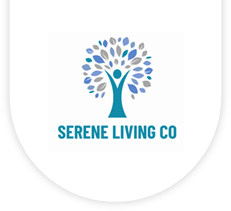What is lumbar traction equipment?

Traditional lumbar traction equipment comes in many shapes and sizes. The classic segmented mechanical traction tables, the traction belts for manual lumbar traction, and the fancier new automated traction tables.
These decompression devices are familiar pieces of equipment in Physical Therapy clinics and Chiropractic offices worldwide.
Disregarding the sleek modern designs of the newer systems, what do all of these lumbar traction units have in common?
The common denominator is that they administer traction therapy to the lumbar spine while the patient is in a sustained, static, supine position.
Who is a candidate for lumbar traction therapy?
Patients who suffer from low back disorders like sciatica, lumbar stenosis, and lumbar herniated discs are generally candidates for lumbar decompression therapy. Lower back disorders and pain have been around for ages and so have methods to alleviate the discomfort for pain associated with these disorders.

When the external pressure placed on a lumbar disc overcomes the internal pressure of the disc itself, the disc can bulge and even herniate, i.e., burst. This escaped fluid exerts pressure on the nerve roots that run along both sides of the vertebrae, causing pain and dysfunction.
The herniated disc also becomes a structural weak point in the spine itself.
A healthy spine is composed of healthy discs "sandwiched" between two vertebrae. The primary role of these discs is to act as shock absorbers. The herniation of even one disc can result in a loss of normal vertebral movement and the height between consecutive vertebrae and affects the overall biomechanics in the lumbar spine.

The loss of typical movement in just one spinal segment will have a negative cascade effect on the healthy movement of the entire body.
How does traditional lumbar traction therapy work?
Lumbar traction is the traditional treatment method for herniated discs in the lumbar region. It involves the application of a strong and continuous longitudinal force to the region of the lower spine to increase the intervertebral space and relieve the pressure on the individual discs and spine itself.
When applied correctly, the desired effect reduces pain and reuptake of fluid in the disc.
6 Clinical Facts about traction devices.
-
Traction decreases intra-discal pressure on the nerve root and dural sac.
-
Disc disorders are accompanied by muscle spasms and reduced transfer of the disc fluid.
-
Research shows that fluid transfer is essential to normal biomechanics in the disc and is possible when the Spine is in Motion.
-
Vertical traction force increases the intervertebral space simultaneously with Horizontal force, creating an effective 3D force.
-
Muscular contraction during exercise naturally helps to facilitate fluid transfer& improves range of motion.
-
Traction is traditionally administered to patients in the supine position, disregarding the importance of mobility for tissue healing and fluid reabsorption.
Dr. Steven Horwitz (www.theevidencebasedchiropractor.com, 2/25/2022)
How can this potentially help me?
Lumbar traction devices are used to treat certain back problems and conditions by applying a pulling force to the lower back or lumbar spine. Here are some reasons why a lumbar traction device might be used:

-
Pain Relief: Lumbar traction can help alleviate pain caused by conditions such as herniated discs, sciatica, and spinal stenosis. By decompressing the spine, it reduces pressure on the nerves and discs, which can lead to pain relief.
-
Disc Decompression: The pulling force applied by the traction device can create space between the vertebrae, reducing pressure on the intervertebral discs. This can facilitate the retraction of herniated or bulging discs and promote healing.
-
Nerve Pressure Relief: When a disc herniates or bulges, it can put pressure on the nearby nerve roots, causing pain and discomfort. Lumbar traction can help relieve this pressure and reduce the symptoms associated with nerve compression.
-
Improved Mobility: By increasing the space between the vertebrae, lumbar traction can enhance joint mobility and flexibility in the lower back.
-
Physical Therapy: Lumbar traction is commonly used as a form of physical therapy in clinics and rehabilitation centers. It can be part of a comprehensive treatment plan to address back issues and improve overall spinal health.
-
Non-Invasive Treatment: Lumbar traction is a non-invasive treatment option for certain back problems. It provides an alternative to surgery for some patients, offering a conservative approach to managing their condition.
-
Preparation for Other Treatments: In some cases, lumbar traction may be used as a preparatory step before other interventions, such as spinal manipulation or therapeutic exercises. It can help reduce muscle spasms and improve the success of subsequent treatments.
It's important to note that lumbar traction may not be suitable for everyone, and its effectiveness can vary depending on the specific condition and individual. Therefore, it's essential to consult with a healthcare professional or physical therapist to determine if lumbar traction is an appropriate treatment option for your specific back problem.
Effective and Safe Lumber Traction Therapy

